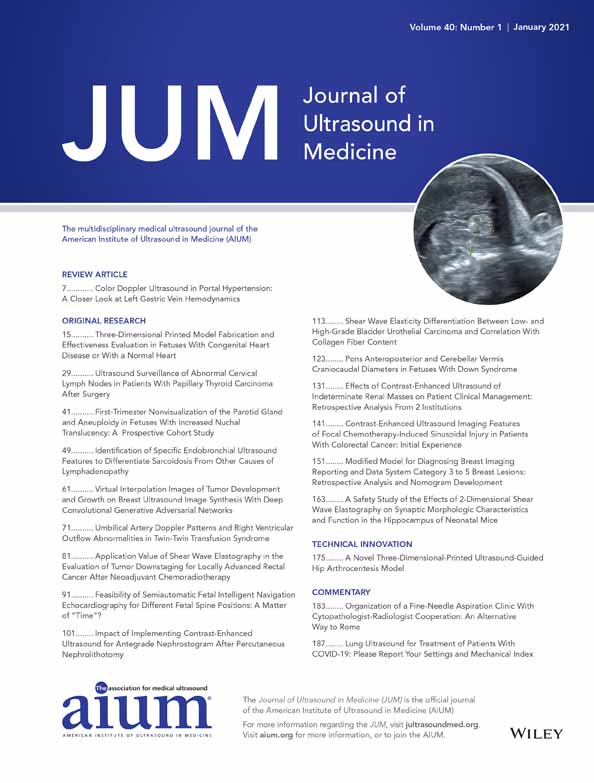Contrast-Enhanced Ultrasound Imaging Features of Focal Chemotherapy-Induced Sinusoidal Injury in Patients With Colorectal Cancer
Initial Experience
All of the authors of this article have reported no disclosures.
Abstract
Objectives
Increasing studies have reported focal chemotherapy-induced sinusoidal injury (CSI) mimicking colorectal liver metastasis (CRLM) on imaging studies, resulting in unnecessary lobectomy. This study aimed to investigate the contrast-enhanced ultrasound (CEUS) imaging features of focal CSI.
Methods
We retrospectively evaluated 16 patients who had a pathologic diagnosis of focal CSI and underwent CEUS between January 2013 and January 2019. The images were compared with those obtained from 27 patients with CRLM.
Results
On CEUS, 14 (87.5%) focal CSIs showed heterogeneous isoenhancement, 1 (6.3%) peripheral hyperenhancement, and 1 (6.3%) homogeneous hyperenhancement during the arterial phase. Compared with the adjacent liver parenchyma, the initial enhancement time of focal CSI was earlier in 2 (12.5%), simultaneous in 9 (56.3%), and later in 5 (31.3%) patients. In the portal and late phases, all of the focal CSI cases showed hypoenhancement compared with the adjacent liver parenchyma. Focal CSI had the following CEUS findings, which were different from those of CRLM: (1) heterogeneous isoenhancement in the arterial phase (87.5% versus 0%; P < .001); (2) an initial enhancement time later than that of the liver parenchyma (mean ± SD, 0.5 ± 1.5 versus −1.5 ± 1.9; P < .001); (3) a longer time to peak (30.5 ± 5.6 versus 22.5 ± 4.4 seconds; P < .001); and (4) a later time to wash-out (51.0 ± 12.5 versus 35.0 ± 6.2 seconds; P = .002).
Conclusions
Focal CSI usually shows heterogeneous isoenhancement in arterial phase and hypoenhancement in portal and late phases on CEUS, with slow contrast wash-in and wash-out, which can be helpful in the differential diagnosis with CRLM.




